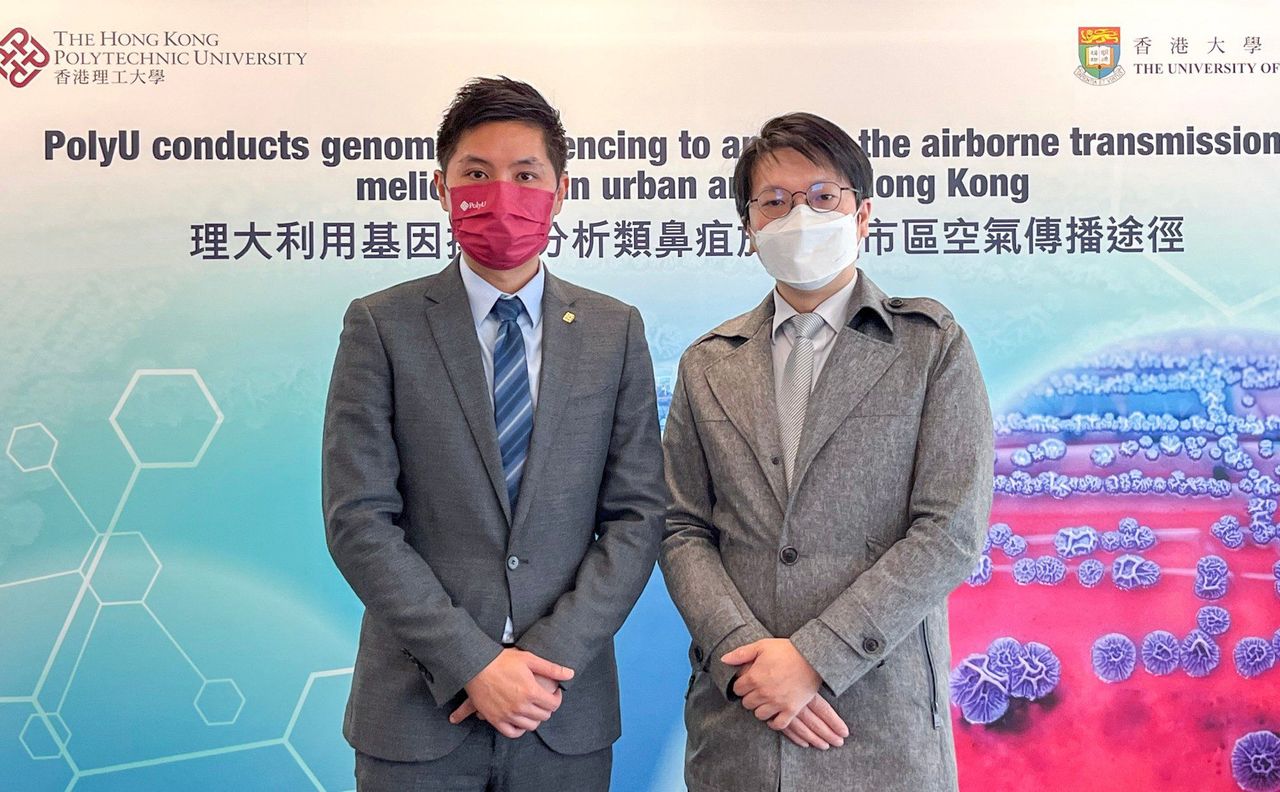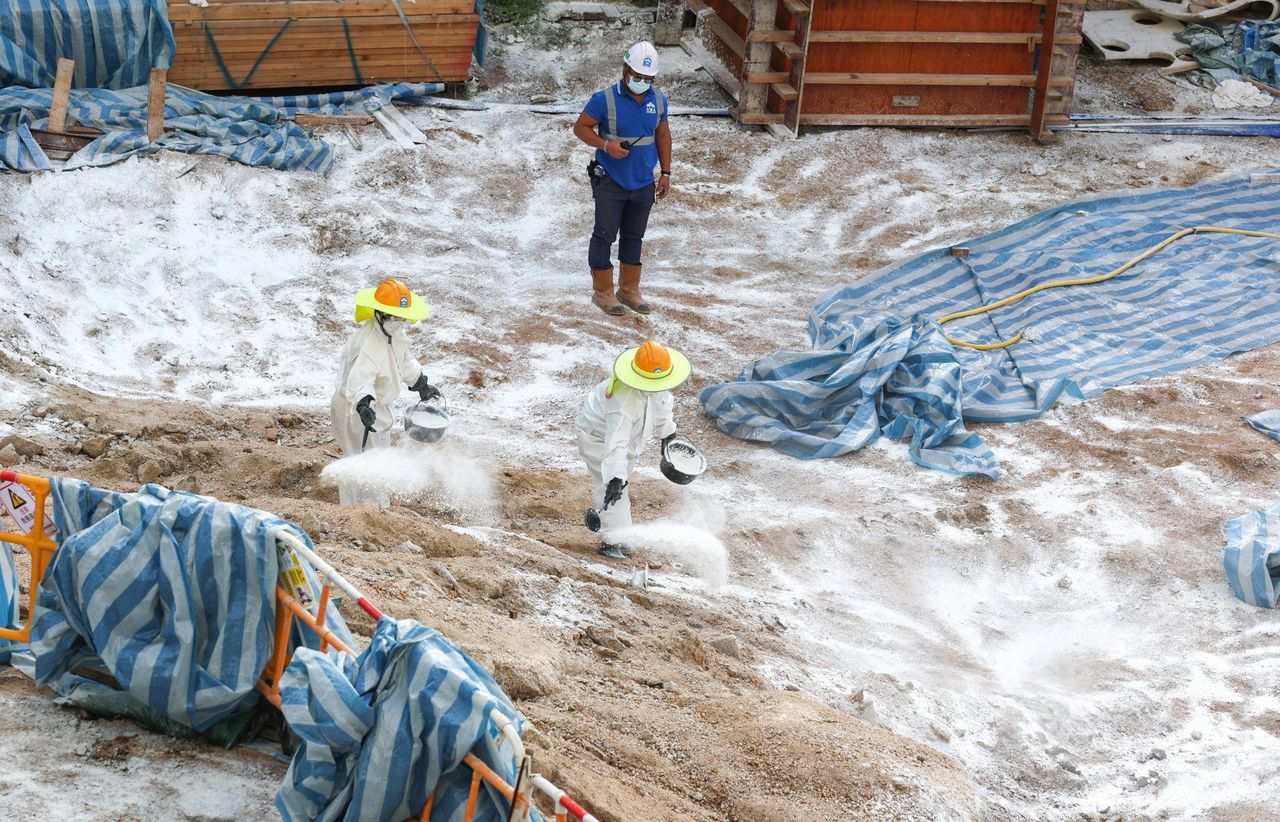Hong Kong News

Melioidosis outbreak in Hong Kong caused by airborne transmission, researchers say
A recent outbreak of melioidosis in Hong Kong may have been caused by airborne transmission, local researchers have suggested after they found the bacteria in an air sample for the first time in the city.
Hong Kong has so far this year recorded 43 melioidosis infections, of which 27 involved residents of Sham Shui Po. Ten cases have been recorded annually on average over the past five years, less than five recorded in the district in Kowloon.
The bacteria is commonly spread through contact with contaminated soil or water, or inhaling contaminated dust.
However, up until now the source of the infection in Sham Shui Po, as well as the transmission method of the bacteria were unknown. Previously experts suggested the possibility of water contamination in freshwater reservoirs.
 A research team led by Dr Gilman Siu and Dr Tommy Lam suggested airborne
transmission to be the cause for the urban outbreak of melioidosis in
Sham Shui Po.
A research team led by Dr Gilman Siu and Dr Tommy Lam suggested airborne
transmission to be the cause for the urban outbreak of melioidosis in
Sham Shui Po. The sample was collected near a construction site in Pak Tin Estate on August 15, five days after Typhoon Mulan passed by Hong Kong, marking the first time the bacteria was found to remain in the air after a storm.
The sample, which has a novel genome sequence called ST-1996, was also found to be the same strain as 38 melioidosis cases recorded by five public hospitals in Sham Shui Po, Kwai Tsing, Tsuen Wan and Lantau Island from January 2015 to October this year.
“From August to October this year, more than 70 per cent of melioidosis cases in the area got pneumonia,” Siu said. “The proportion is significantly higher than in other places such as Australia and Thailand, where less than half of the cases presented with the condition.”
“These clinical and epidemiological findings all suggested that the outbreak in Sham Shui Po is caused by airborne transmission.”
Dr Tommy Lam Tsan-yuk, associate professor of the University of Hong Kong’s School of Public Health, who also took part in the research, said at least five transmission chains of melioidosis were present in Hong Kong, with the ST-1996 being the dominant one of the recent outbreak.
“ST-1996 is a new strain, its sequence is quite similar to some strains found in Hainan and Thailand. But we need further study to find out its level of drug resistance and toxicity,” Lam said.
Meanwhile, more than 20 soil samples, out of 72, collected from the construction site, Garden Hill, and Shek Kip Mei Park tested positive for the bacteria, suggesting a high prevalence of the bacteria in the soil of Sham Shui Po district.
Siu attributed the prevalence to the removal of vegetation, which reduced soil cohesion. According to satellite images, the proportion of vegetation dropped by more than 90 per cent from 2016 to 2022.
“As we hypothesised, with less vegetation and more rainfall, it’s easier for the bacteria in deeper soil layers to move upwards to the surface of the ground,” he said. “And in typhoon season, the contaminated soil will be aerosolised and be carried away by winds and then be inhaled by residents.”
Siu added it was possible the positive air sample collected in August was carried from Garden Hill to the construction site by the prevailing southwesterly winds.
 Workers spray disinfectant at a construction site at Pak Tin Estate,
Sham Shui Po. Soil samples taken from the area tested positive for
melioidosis.
Workers spray disinfectant at a construction site at Pak Tin Estate,
Sham Shui Po. Soil samples taken from the area tested positive for
melioidosis.
The team expected more cases of melioidosis to emerge during typhoon season next year and suggested residents living on hillsides keep their windows closed for a few days after a storm, and wear a face mask when going out, to reduce the chance of inhaling the aerosol.
Siu said he believed planting more vegetation in Sham Shui Po would improve the integrity of the soil and lower the chance of airborne transmission.
Siu added that Caritas Medical Centre in Sham Shui Po district is conducting a bacteria culture test for every pneumonia patient to facilitate early detection and treatment of melioidosis. Three cases have been identified at their laboratory since October.
Meanwhile, the team would continue their efforts to collect air and soil samples and do bacteria culture tests in the district, in a bid to identify the ultimate source, or the “hotbed” of the bacteria.











